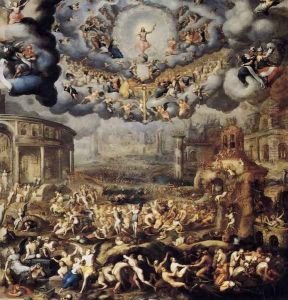Jean the Younger Cousin Paintings
Jean Cousin the Younger was a French painter, engraver, and sculptor who played a significant role in the French Renaissance art movement. He was born in 1522 in Soucy, France, and was the son of Jean Cousin the Elder, who was also a notable artist of his time. The Cousin family was known for their artistic talents, and Jean the Younger was no exception. He became known for his skills in various mediums, including oil painting, drawing, and stained glass.
Jean the Younger's education in art likely began under the tutelage of his father, and he was profoundly influenced by the Italian Renaissance, which had a significant impact on French art in the 16th century. Although not as widely known as his father, Jean the Younger distinguished himself through his work on religious subjects, mythological scenes, and portraits. His style is characterized by its elegance, refined compositions, and the use of allegory.
One of Jean the Younger's most notable works is the 'Last Judgment,' which is often confused with his father's work due to their shared name and similar subject matter. His other works include designs for tapestries and stained glass windows for various churches, which have contributed to the decoration of religious buildings in France. Some of his designs were even used for the windows of the Saint-Eustache Church in Paris.
Despite his contributions to French art, much of Jean the Younger's life remains obscure, and many of his works have been lost or were never properly attributed to him, leading to a blend of his identity with that of his father's. He died in 1594, leaving behind a legacy that has been overshadowed by other Renaissance artists, but which nevertheless represents an important chapter in the history of French art. Jean Cousin the Younger's works that do survive demonstrate the transitional period of French art from the Gothic style to the more classical Renaissance mode.
